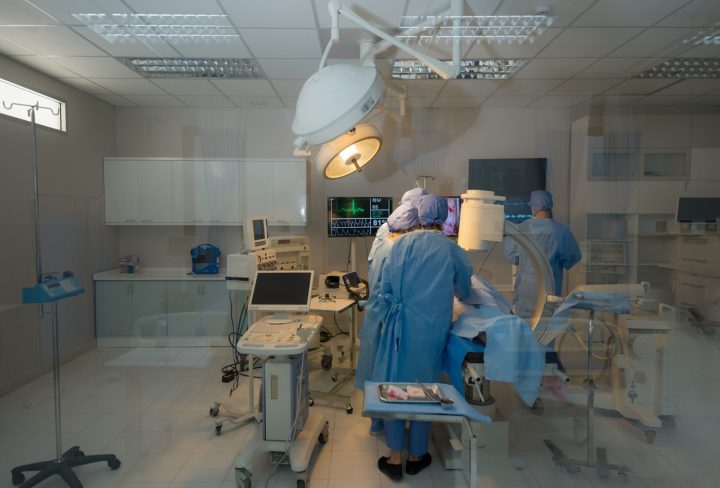Laparoendoscopic single site (LESS) surgery is a minimally invasive surgical technique that offers many of the benefits of traditional laparoscopic surgery while reducing overall incision size and recovery time. This technique uses only one small incision, typically located in the umbilicus or belly button, to insert a camera and instruments into the abdomen. This allows the surgeon to perform the same procedures as traditional laparoscopy but with less pain, scarring, and recovery time. LESS is beneficial for both the patient and the surgeon, as it can often result in shorter operating times, fewer complications, and faster recovery times. In addition, LESS is often more cost-effective than traditional laparoscopy since fewer instruments are required.
Why is a Laparoendoscopic Single Site Surgery performed?
Laparoendoscopic Single Site Surgery (LESS) is a minimally invasive surgical procedure that is performed using a single incision through the navel. This technique is used to treat a variety of conditions, including gallbladder removal, hernia repair, appendectomy, and hysterectomy. It is preferred over traditional open surgery because it reduces the risk of infection, scarring, and tissue trauma, and can result in a quicker recovery time.
How to prepare for Laparoendoscopic Single Site Surgery?
1. Learn about the procedure: Understand the risks and benefits of Laparoendoscopic Single Site Surgery (LESS) and make sure you are aware of the specific details of your upcoming procedure.
2. Discuss the procedure with your doctor: Ask your doctor questions about the procedure and the expected outcome.
3. Make arrangements for aftercare: Make sure you have someone to help you with postoperative care and understand the recovery process.
4. Avoid taking certain medications: Stop taking any non-essential medications, such as blood thinners, several days prior to the procedure.
5. Follow preoperative instructions: Your doctor may give you specific instructions to follow before the procedure, such as fasting and avoiding certain foods. Follow these instructions closely.
6. Follow postoperative instructions: Make sure you understand the postoperative instructions that your doctor gives you and adhere to them. This will help ensure a smooth recovery.
What to expect after a Laparoendoscopic Single Site Surgery?
After a Laparoendoscopic Single Site (LESS) Surgery, patients can expect to experience some discomfort, swelling, and soreness at the incision site. Patients should also expect to have some drainage from the incision, which is normal and helps the healing process. Patients should also expect to be instructed to take it easy for the first few days and to avoid any strenuous activity or heavy lifting for up to six weeks. Patients may also be prescribed pain medication or antibiotics to help manage any discomfort or infection.
Tips to follow after Laparoendoscopic Single Site Surgery
1. Follow your doctor’s instructions: After Laparoendoscopic Single Site Surgery, it is important to follow your doctor’s instructions. Your doctor will provide you with specific instructions regarding your post-operative care and activity restrictions.
2. Take medications as prescribed: Your doctor may prescribe medications to help control pain, reduce inflammation, and reduce the risk of infection. Make sure to take all medications as prescribed.
3. Follow a healthy diet: Eating a balanced diet with plenty of fruits and vegetables is important for your recovery. Avoid processed and high-fat foods, as well as foods high in sugar and salt.
4. Get plenty of rest: Your body needs time to heal. Make sure to get plenty of rest and avoid strenuous activities or exercise until your doctor gives you the green light.
5. Avoid heavy lifting: Heavy lifting can put strain on your incision site and cause complications. Avoid heavy lifting until your doctor tells you it is safe.
6. Wear loose clothing: Wearing loose clothing can help reduce discomfort and irritation around the incision site.
7. Avoid extreme temperatures: Extreme temperatures, such as hot tubs or saunas, can put strain on your incision site and cause complications. Avoid extreme temperatures until your doctor tells you it is safe.
8. Follow up with your doctor: Make sure to follow up with your doctor after your surgery. This will allow your doctor to monitor your progress and make sure you are on the right track.
Laparoendoscopic Single Site Surgery: Advantages
– Less pain and quicker recovery than traditional open surgery
– Reduced post-operative discomfort
– Reduced risk of infection
– Reduced need for pain medications
– Reduced hospital stay
– Reduced scarring
– Reduced risk of hernia formation
– Quicker return to normal activities
Myth and Fact on Laparoendoscopic Single Site Surgery
Myth: Laparoendoscopic single site surgery is a new and experimental technique.
Fact: Laparoendoscopic single site surgery is a minimally invasive surgical procedure that has been used for over a decade and is now considered a safe and effective option for many surgeries.
